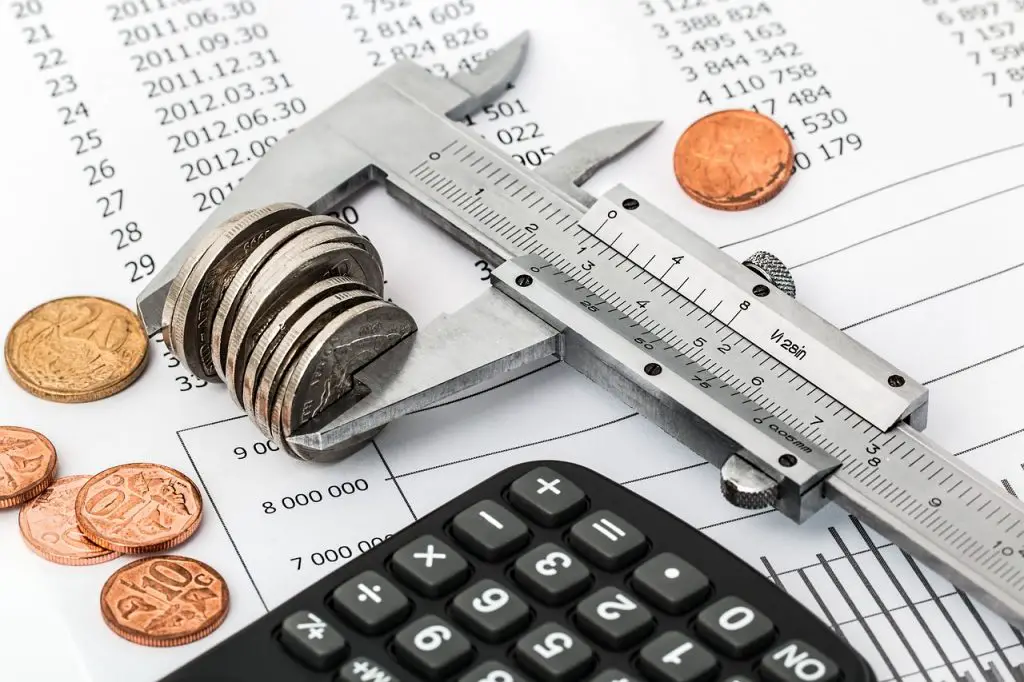This month, the Money Blog Network’s group project is budgets. I’m not in the MBN, but I’ve decided to post a blog about my method in creating a cash flow budgeting system. It’s far more effective for my husband and me than a traditional category-based budget. MBN lists several other budget posts on their site, if you want to test a few different budgeting, and anti-budgeting, methods.
The Monthly Budget by Category
My husband and I use Quicken to track our daily spending. About once a year, my husband and I run out a Quicken budget, just to see how our actually monthly category spending has changed. Then we copy it into Excel so we can play with the numbers: how much more we would have if we paid off this loan or reduced that expense.
This is an example of what that would look like. If I were studying this, I would see that I could cut the dining budget and might consider reducing utility expenses if possible.
The monthly budget is a helpful way to get an idea of how and where we spend money on average, but it isn’t necessarily useful for planning our monthly cash flow. The budget averages out our expenses rather than showing the blips as they actually occur. For example, auto insurance isn’t paid monthly, but it appears that way in a budget. We have to plan for the blips, not the even keel budget. Instead of a line-item budget, we use a cash flow statement to plan our monthly bills and spending to add in our budgeting system.
The Cash Flow Budget
The cash flow budget is a much better picture of our expected income and expenses for the month. These are actual bills we must pay, rather than categories that may vary every month. For example, if it’s an auto insurance month, then we know to reduce our spending in other areas to make up the difference. It also helps us plan our debt repayment because we know how much we’ll have leftover at the end of the month.
This is a sample of a cash flow budget for February. You’ll note that the numbers above don’t match the numbers here. There are two reasons: 1. I made many of the numbers up, and 2. Most of our recurring charges (utilities, cell phone, gym, etc.) are on one of the credit cards, so we don’t pay them as a separate monthly bill through our checking account.
Expected bills with variable due dates (like a bi-monthly utility) go at the bottom because we know they’re coming at some point, but not when.
At the beginning of the month, we look at our Quicken account balances for variable bills like credit cards and ballpark the payment amounts in our cash flow chart. We adjust with exact figures as the month proceeds and the bills come in. At the end of the month, we take the end number and add it to our debt payments for the next month. Once our debts are gone (except some student loans), that end number will go towards other goals like savings or investments.
In addition, it helps us see where the bills fall in relation to our income. For example, if we plan to make a big credit card payment, but know that the deposit that covers it doesn’t occur until two days later, we can reduce the payment. Then we can schedule another payment after the deposit.
Creating a Cash Flow Budgeting system
If you want to create a cash flow budget, follow these simple steps:
- Get out your checkbook register.
- Create an excel chart with payment dates and amounts for all expenses for the last six months. Rather than the generic terms I use above, use the names of the payments, like Amex, Discover, and Sallie Mae.
- Use three columns for each month like in the above chart. We go across the sheet for each new month rather than down so several months fit on the screen at once. Although you’ll have to tweak it as time progresses, this gives you a good overview of when your various bills are due.
- Just before each month, review the expected expenses for that month and make adjustments for changes in your finances. Also review the previous month and carry over any remaining balance to the next month.
- At the end of the sixth month, copy the last month over to new columns and update the dates and amounts for month seven.
Once you get used to this budgeting system, you’ll probably find that you feel more comfortable with your finances because you always have a snapshot view of them. It doesn’t require special software and no one else has access to your data. If you don’t have Excel, you can use an OpenOffice or GoogleDocs spreadsheet, instead. This is very different from the system I used when I was single, but I much prefer it. Give it a try, you might like it!
